Abstract
This investigation, consisting of two experiments, was designed to assess the effects of autistic immediate echolalia on acquisition and generalization of receptive labeling tasks. Experiment 1 addressed whether autistic children could use their echolalia to facilitate acquisition. The results indicated that incorporating echolalia (echo of the requested object's label) into the task before manual response (handing the requested object to the experimenter) facilitated receptive labeling. Experiment 2 was designed to determine the effects of incorporating echolalia into task response on acquisition and subsequent generalization. These results indicated that echolalia facilitated generalization for echolalic autistic children but not for functionally mute autistic children. The results of the experiments are discussed in terms of stimulus control. Additionally, it is proposed that perhaps in certain cases, echolalia should not be eliminated, but used to advantage in receptive responding.
Full text
PDF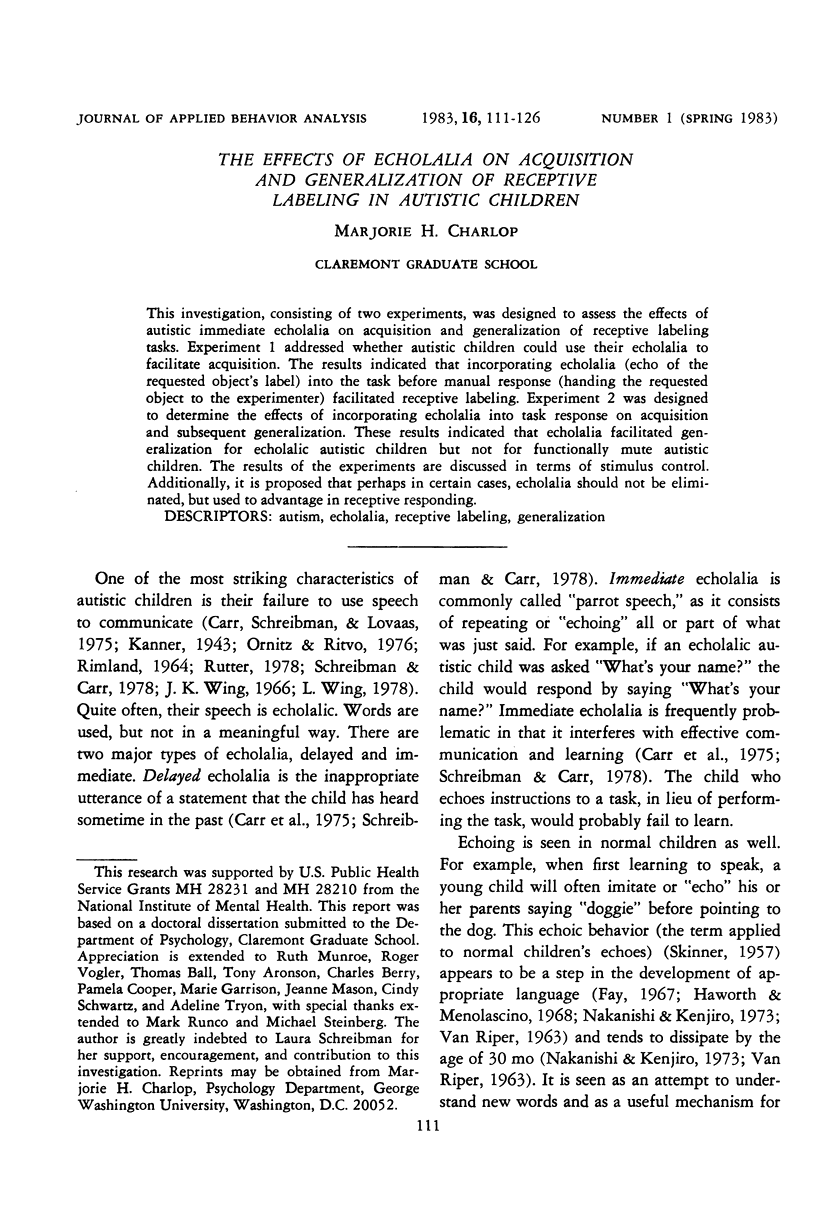
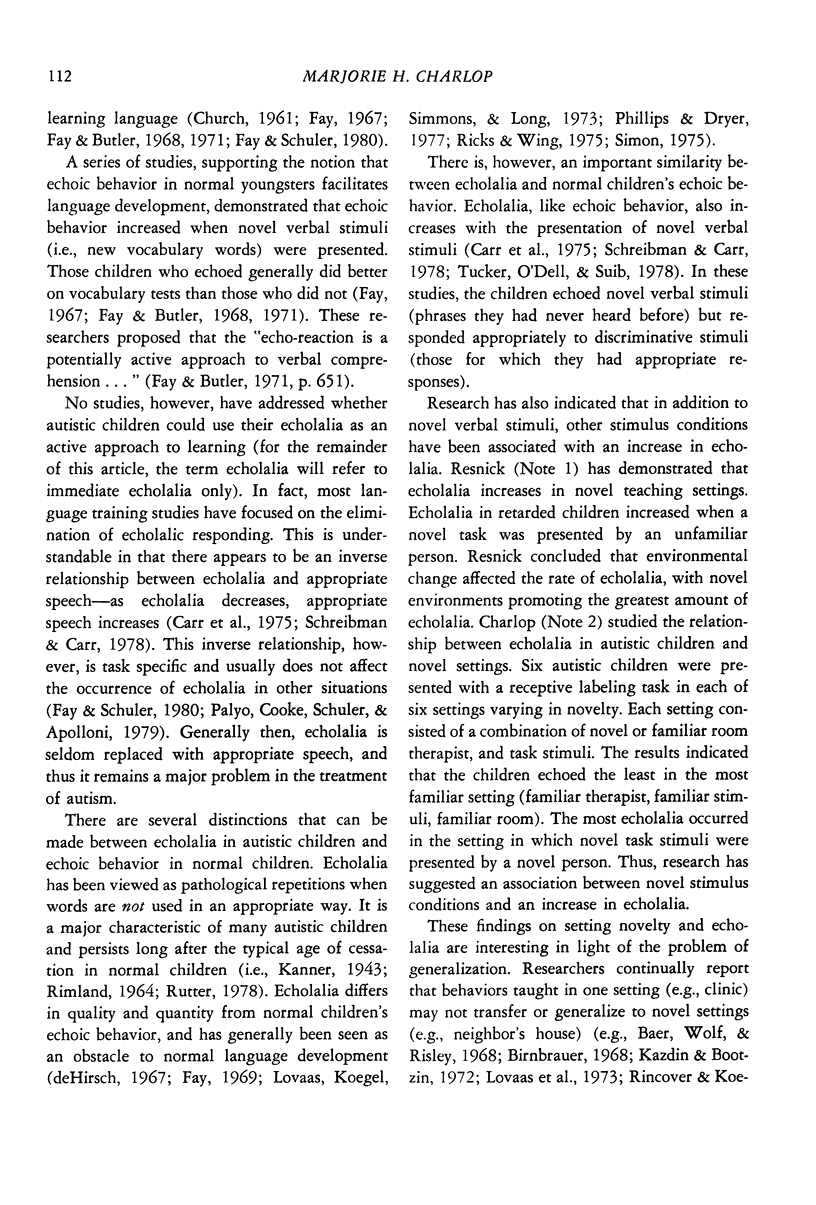
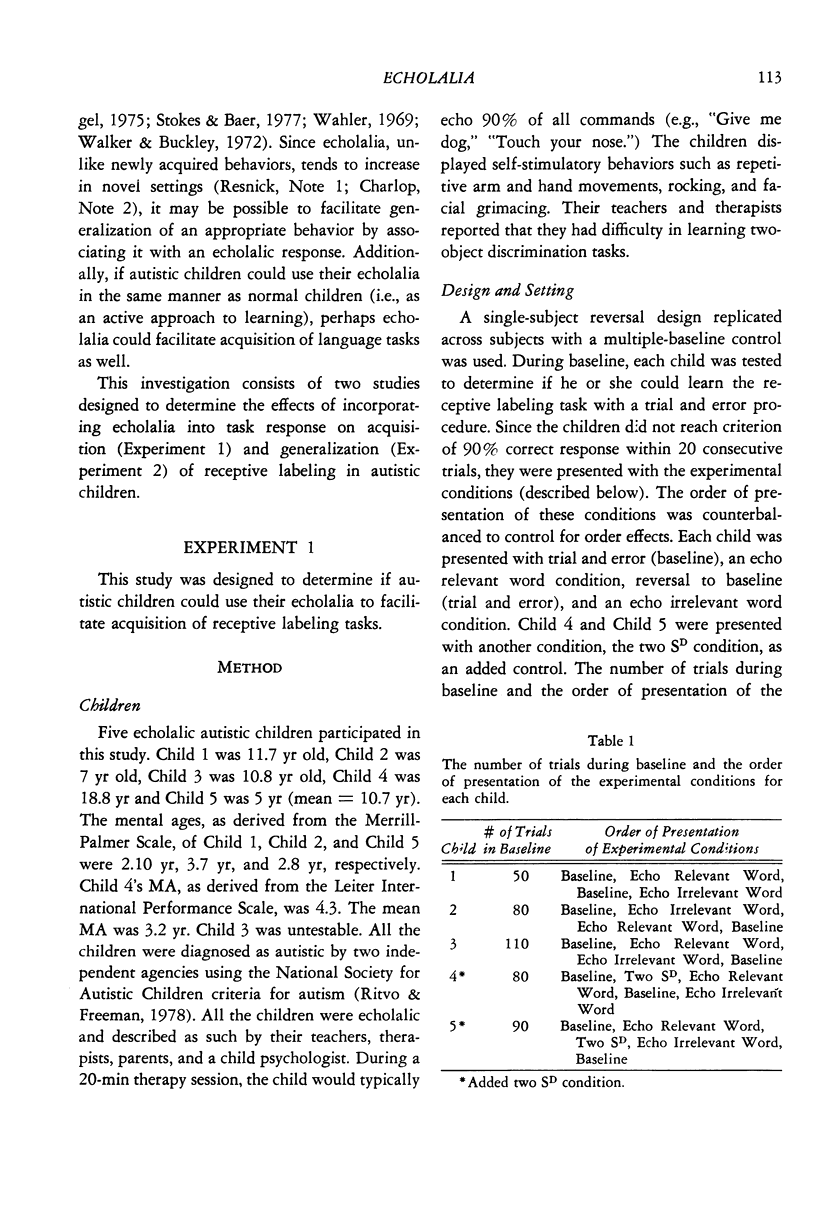
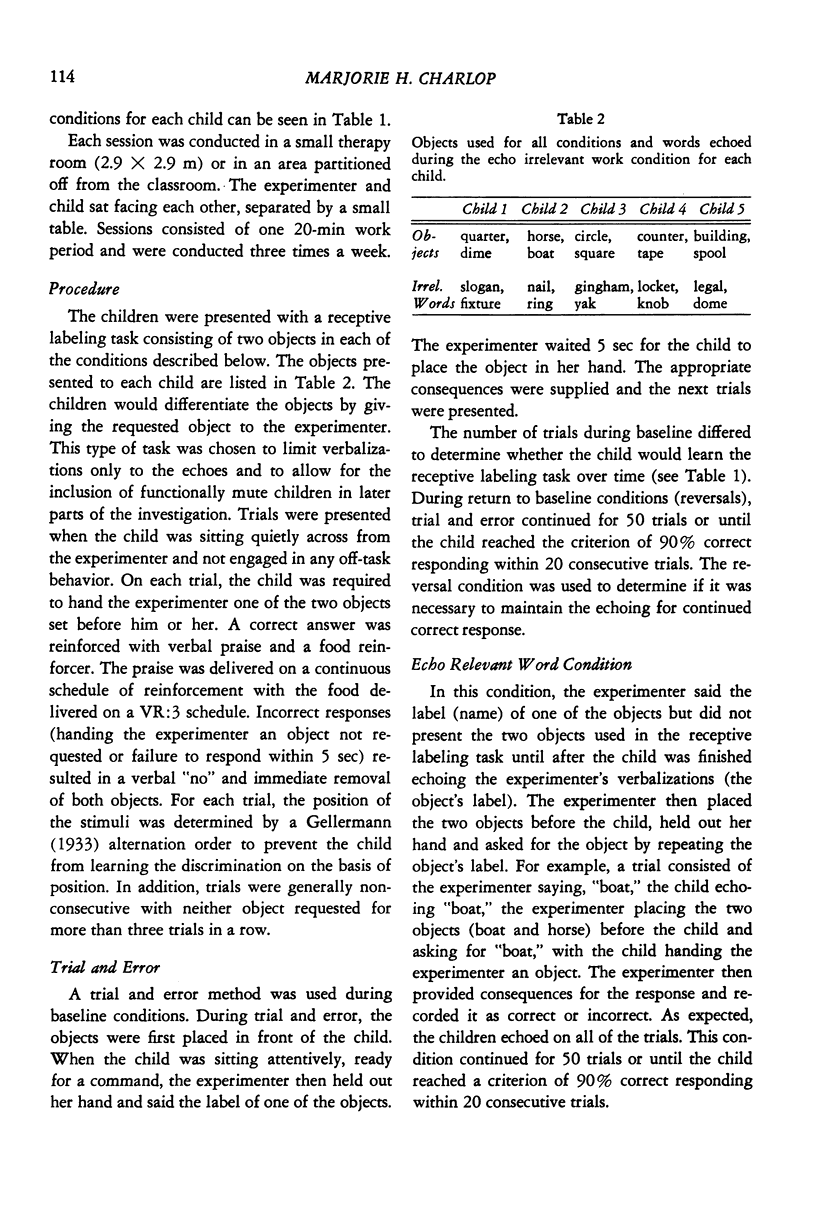
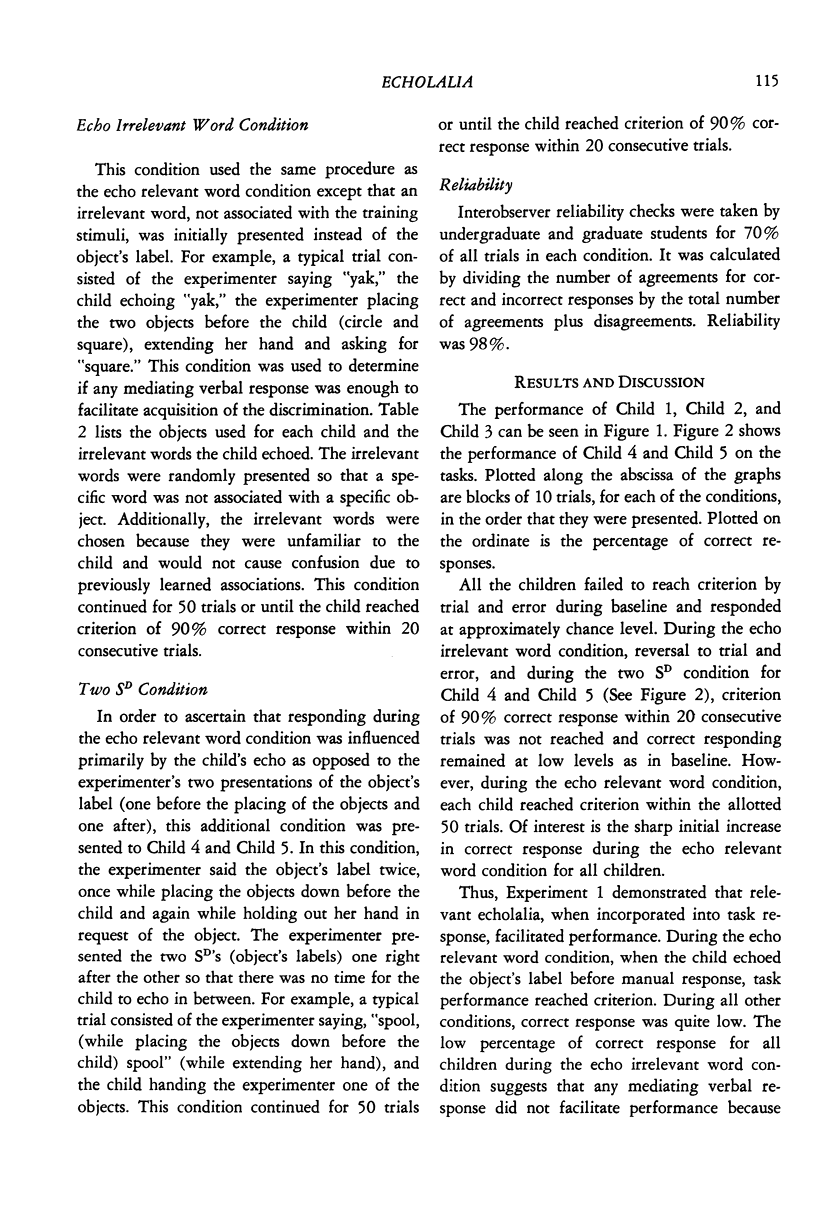
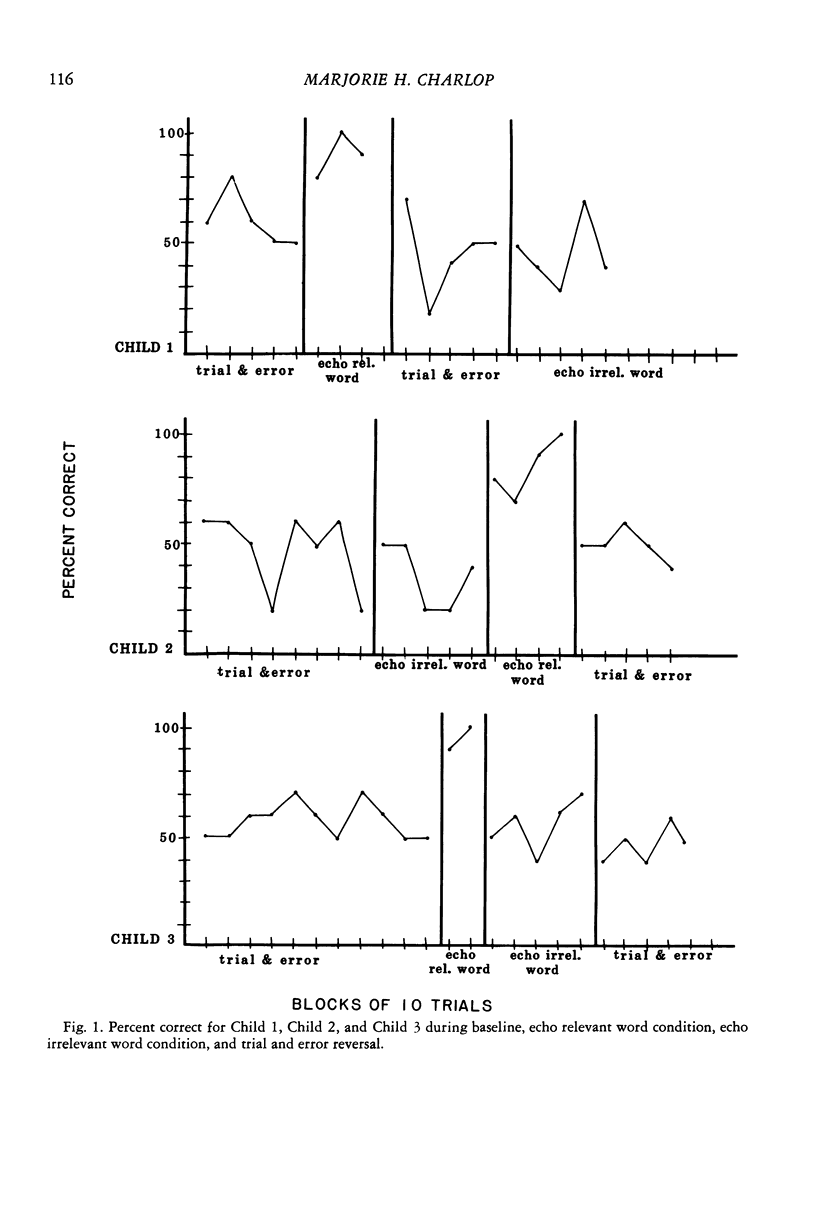
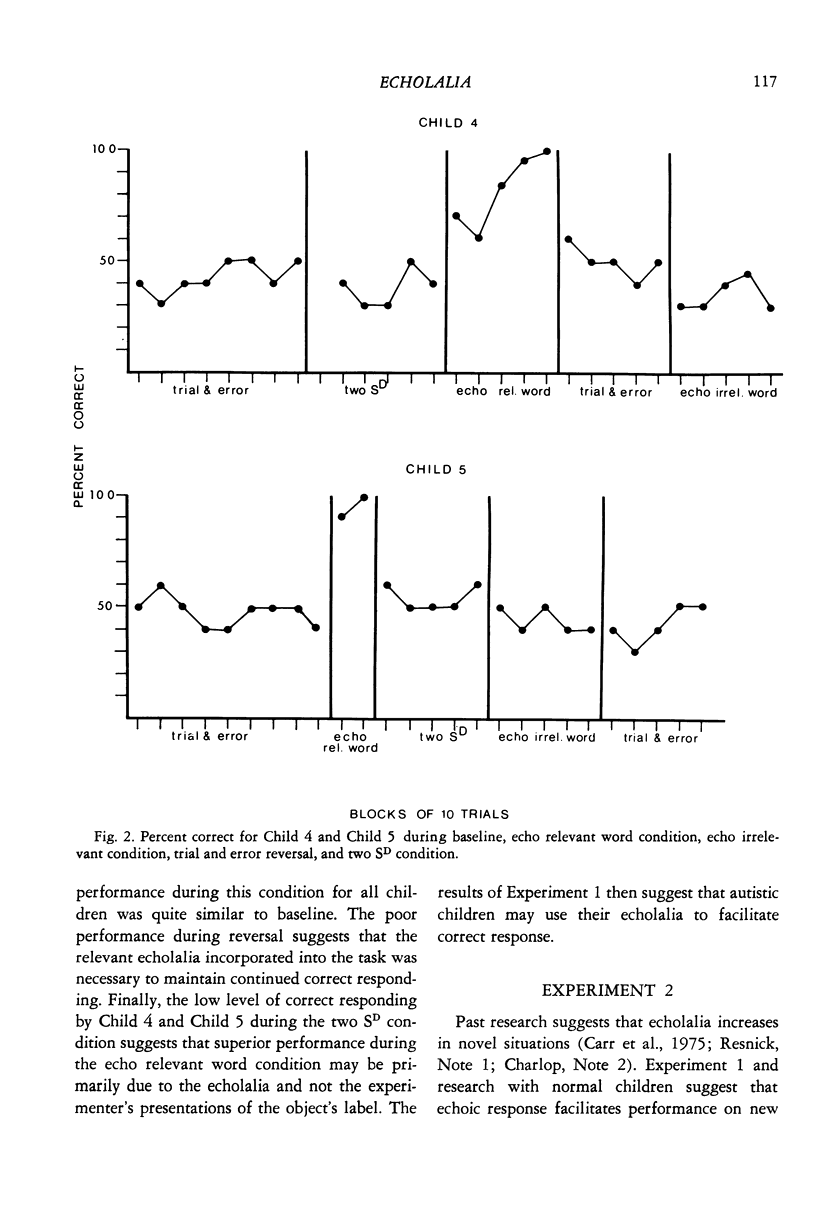
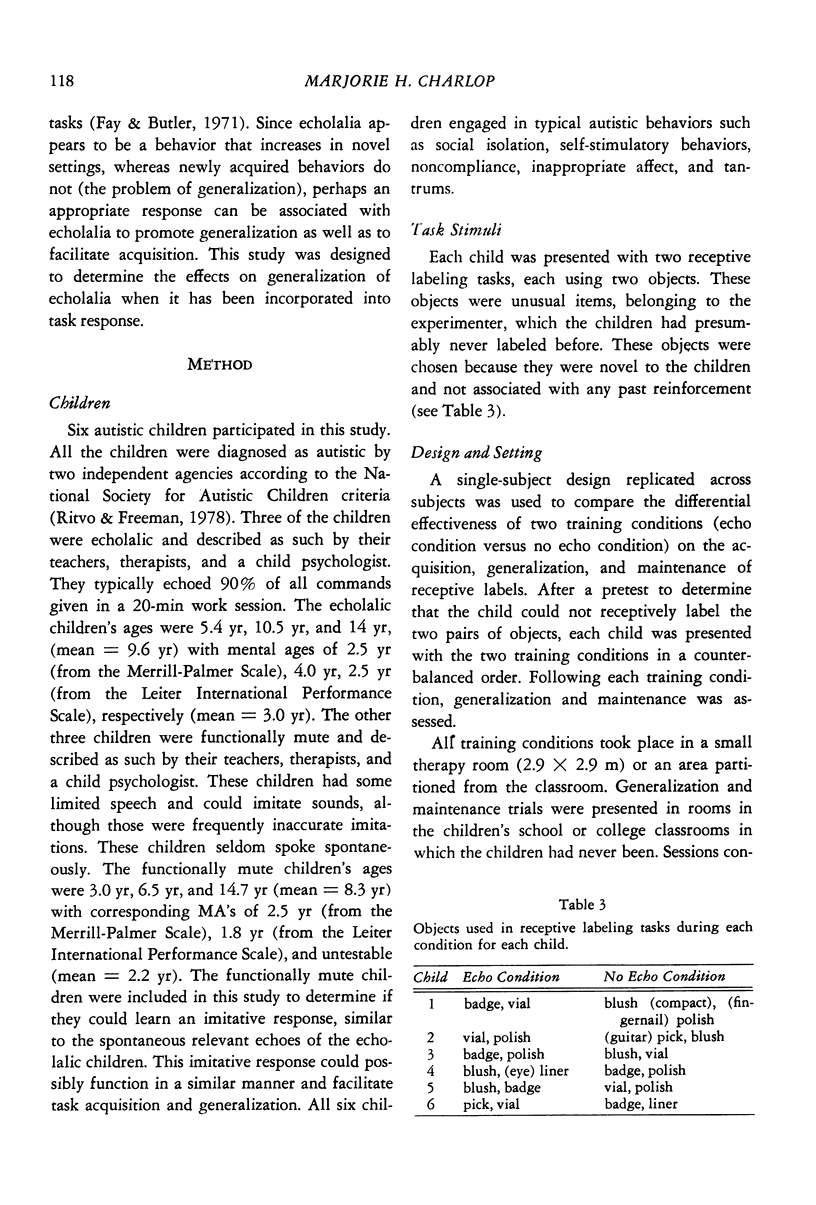
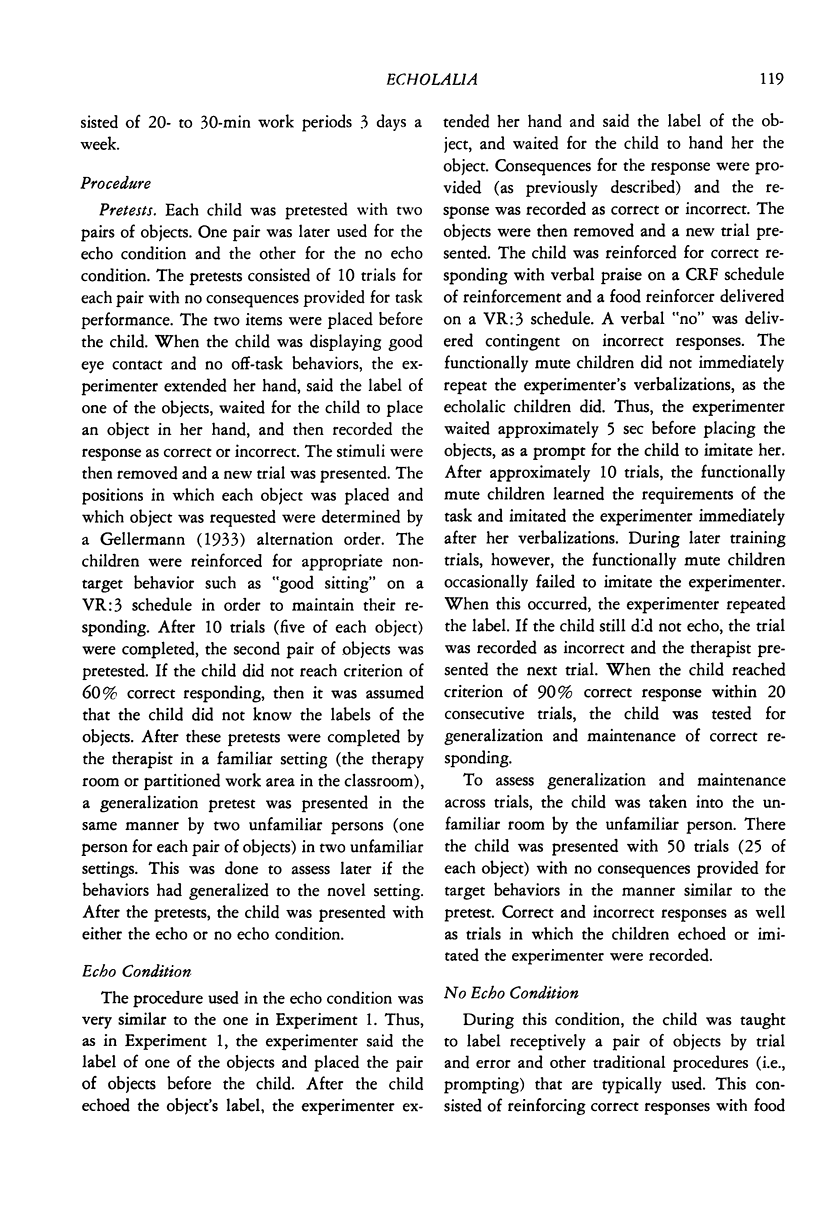
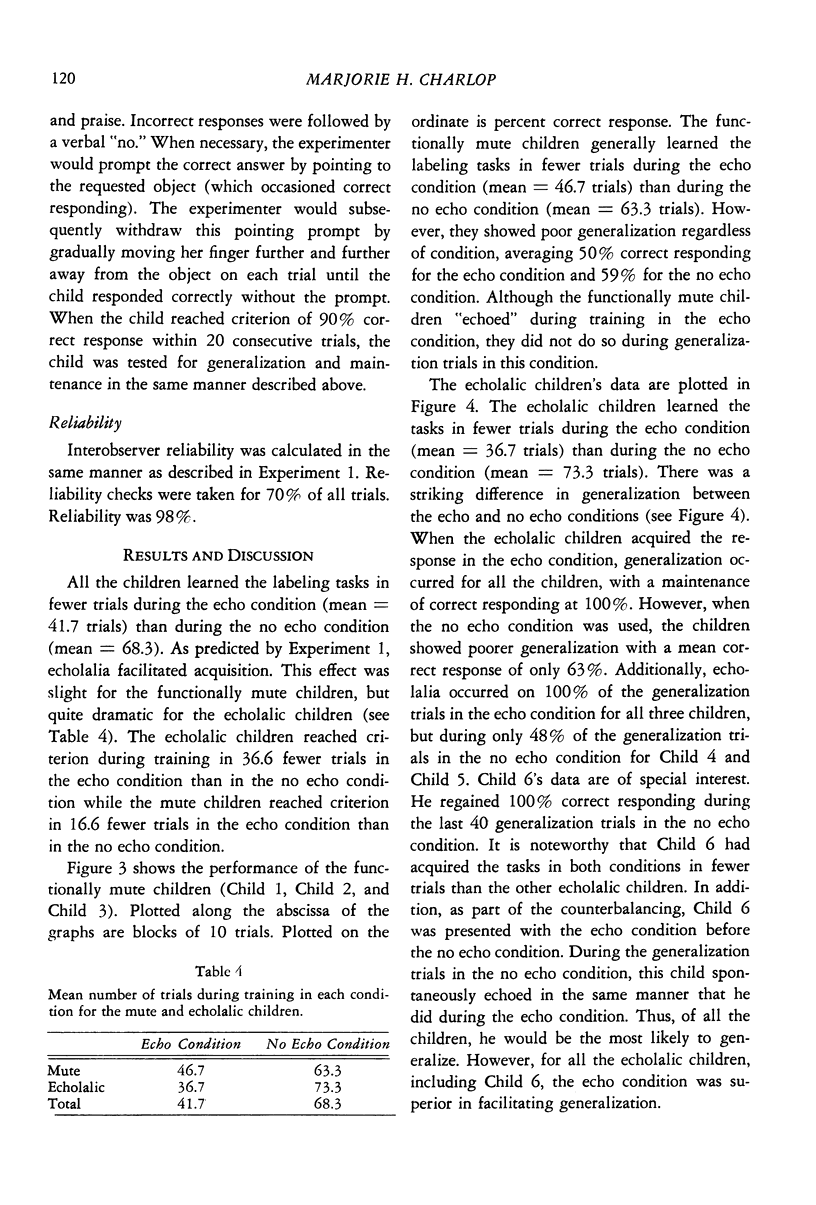
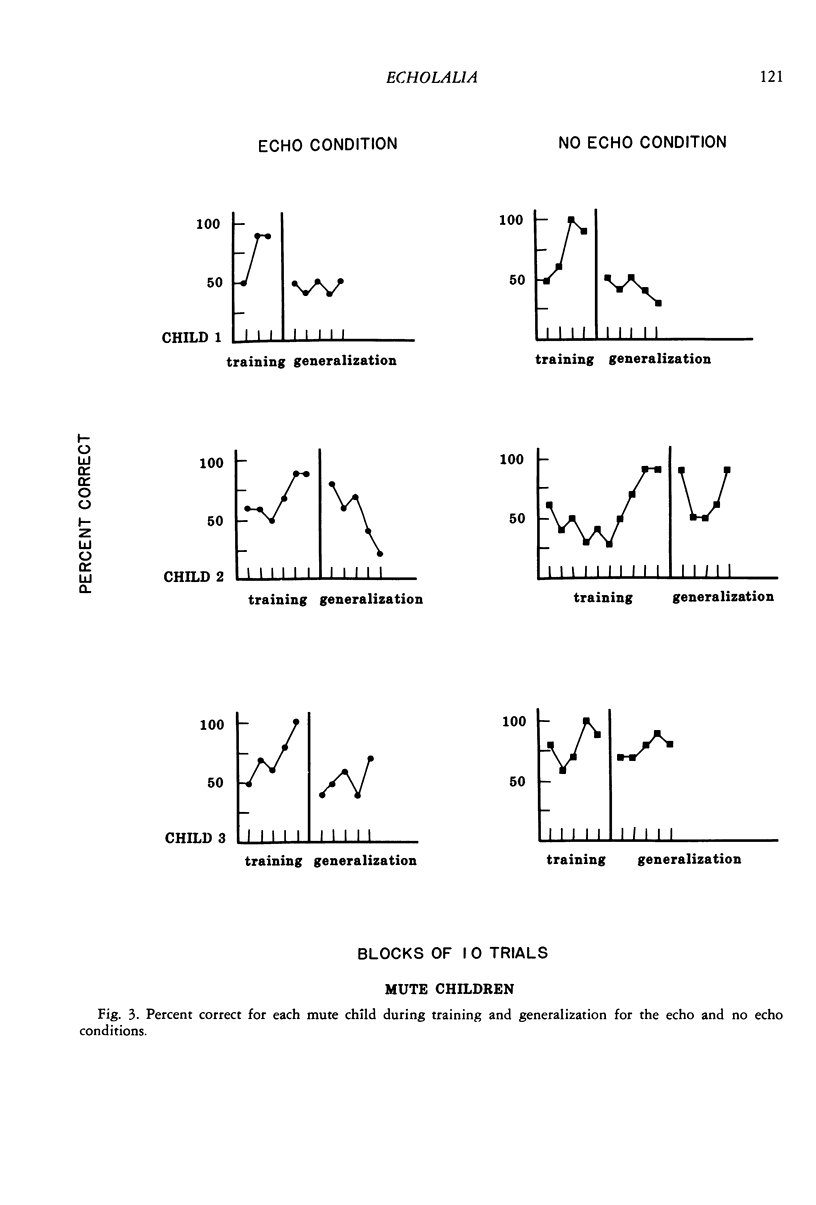
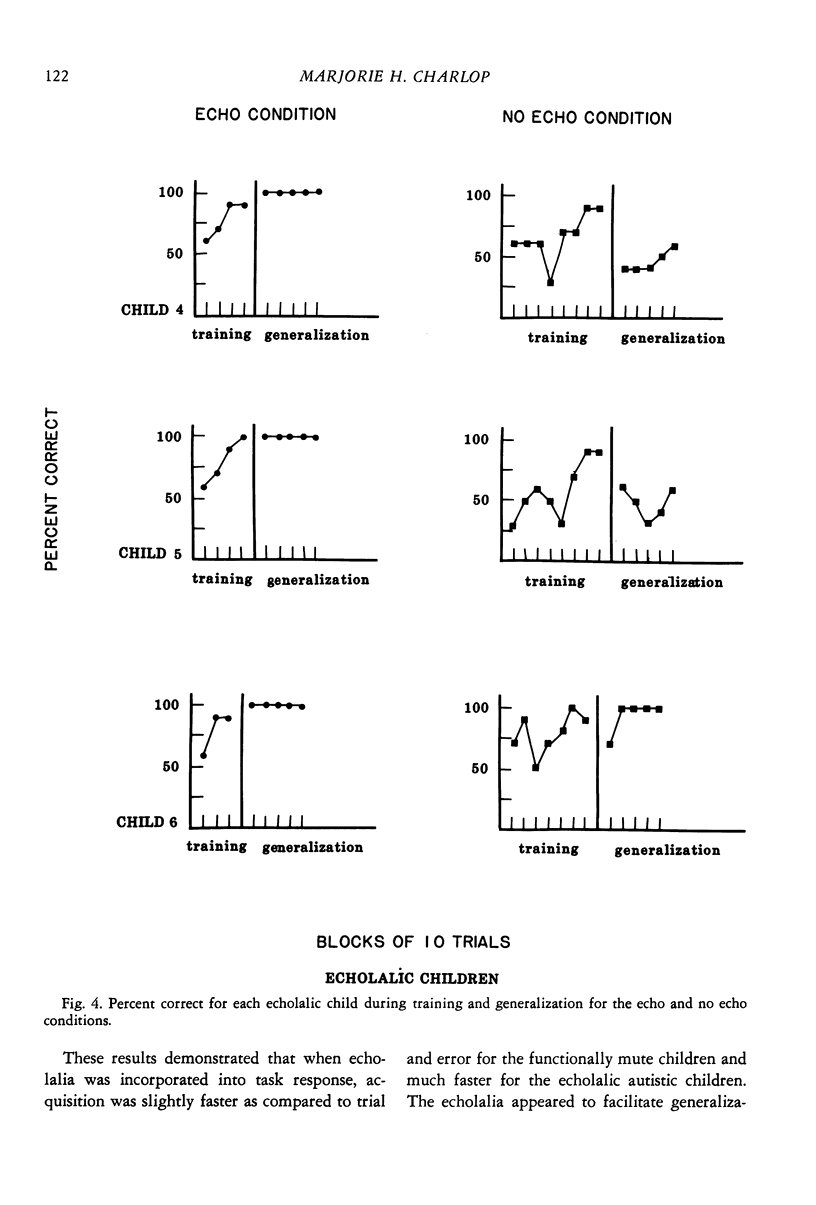
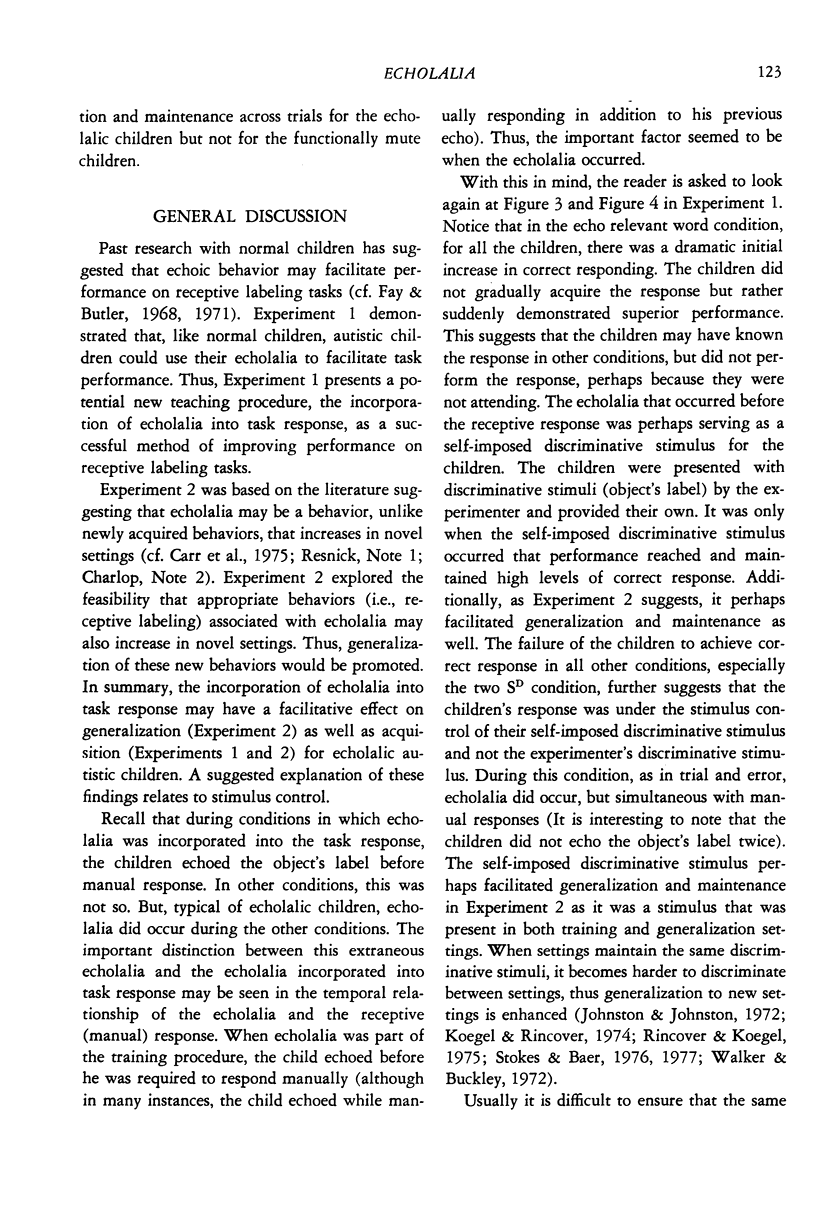
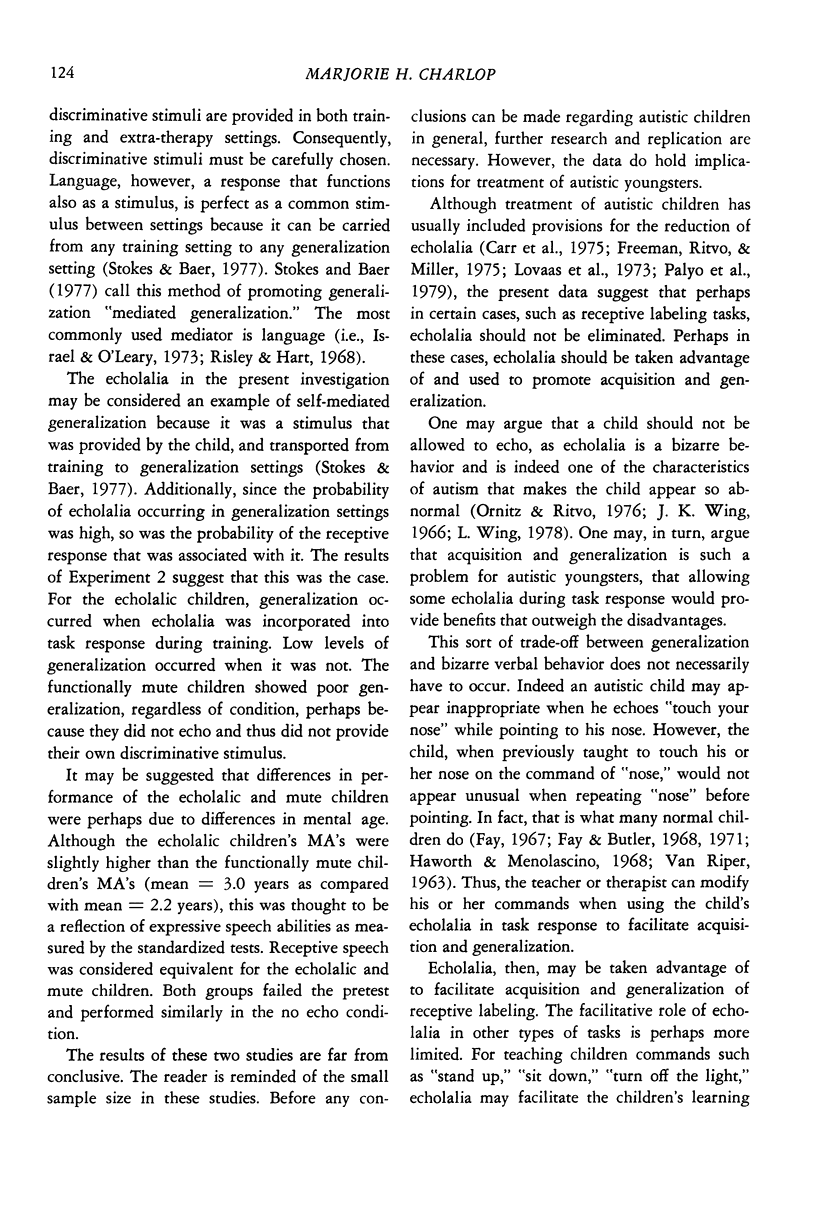
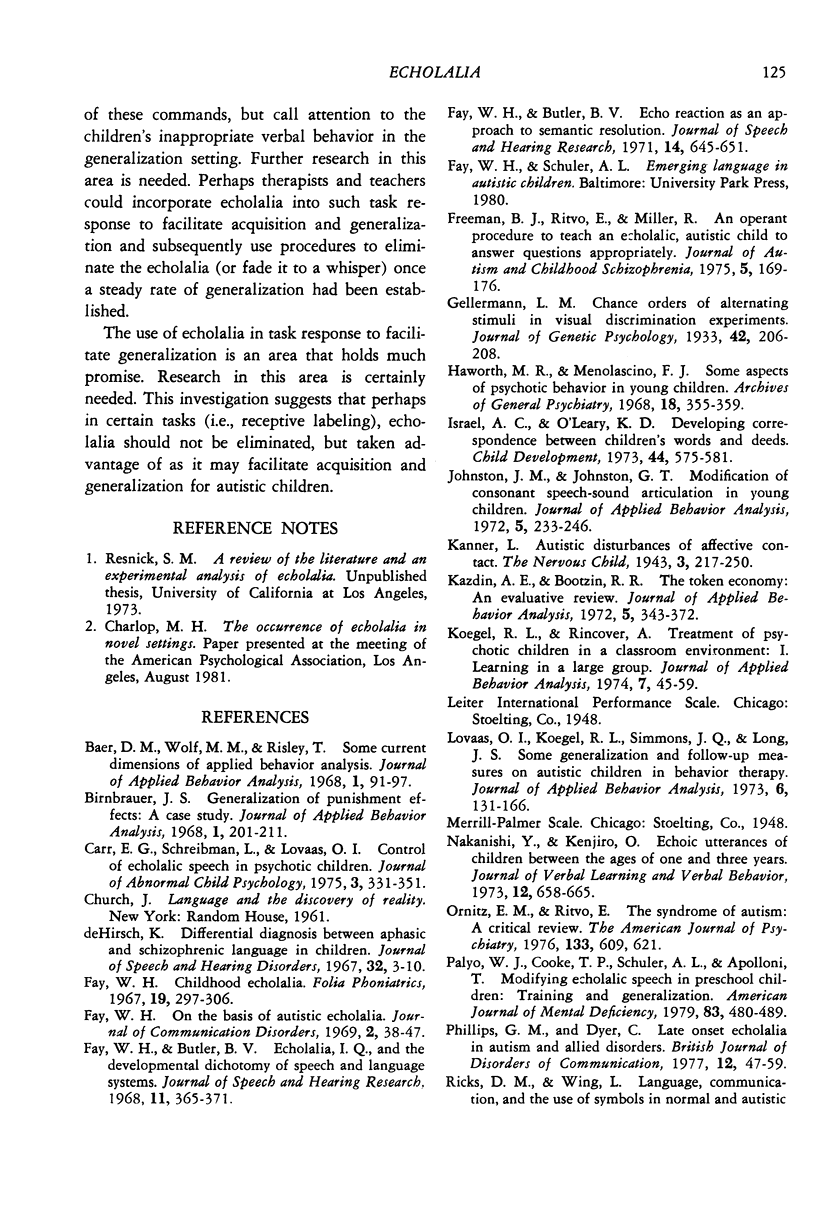
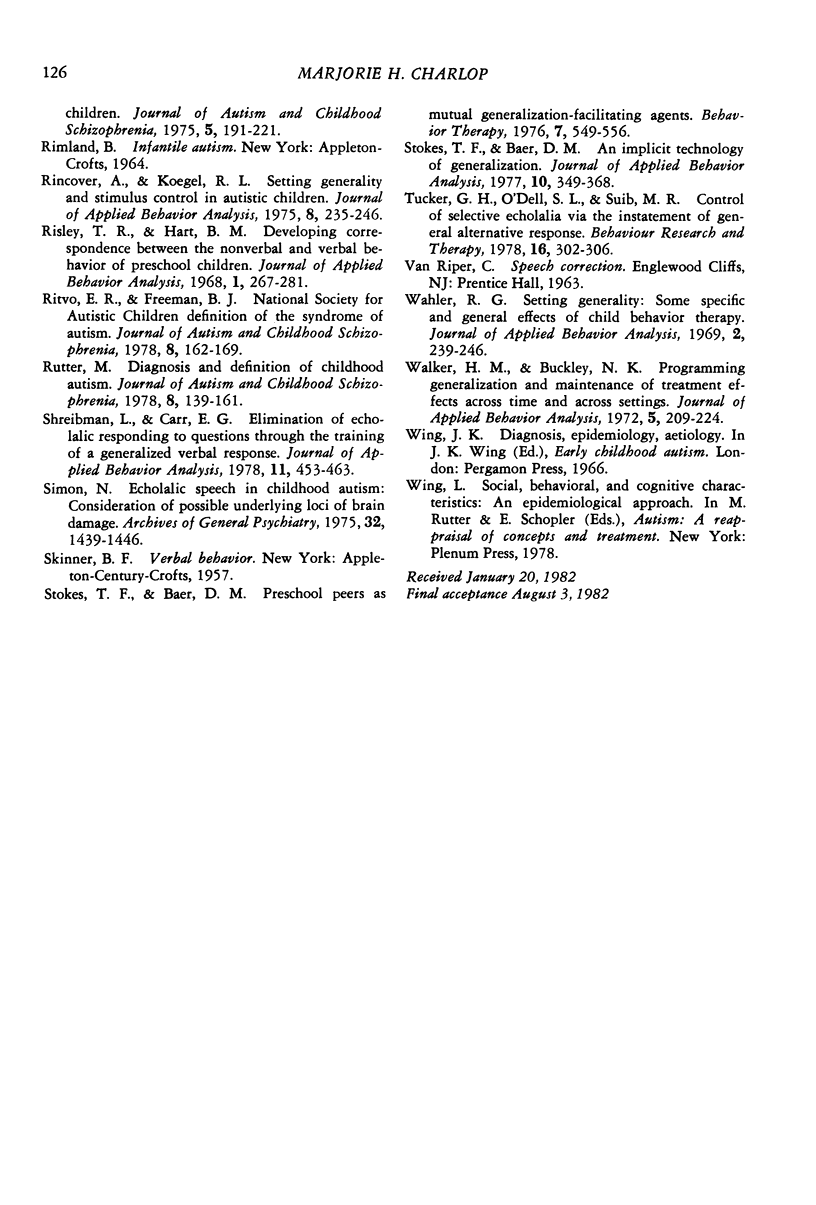
Selected References
These references are in PubMed. This may not be the complete list of references from this article.
- Baer D. M., Wolf M. M., Risley T. R. Some current dimensions of applied behavior analysis. J Appl Behav Anal. 1968 Spring;1(1):91–97. doi: 10.1901/jaba.1968.1-91. [DOI] [PMC free article] [PubMed] [Google Scholar]
- Birnbrauer J. S. Generalization of punishment effects-a case study. J Appl Behav Anal. 1968 Fall;1(3):201–211. doi: 10.1901/jaba.1968.1-201. [DOI] [PMC free article] [PubMed] [Google Scholar]
- Carr E. G., Schreibman L., Lovaas O. I. Control of echolalic speech in psychotic children. J Abnorm Child Psychol. 1975;3(4):331–351. doi: 10.1007/BF00917420. [DOI] [PubMed] [Google Scholar]
- Fay W. H., Butler B. V. Echo-reaction as an approach to semantic resolution. J Speech Hear Res. 1971 Sep;14(3):645–651. doi: 10.1044/jshr.1403.645. [DOI] [PubMed] [Google Scholar]
- Fay W. H., Butler B. V. Echolalia, IQ, and the developmental dichotomy of speech and language systems. J Speech Hear Res. 1968 Jun;11(2):365–371. doi: 10.1044/jshr.1102.365. [DOI] [PubMed] [Google Scholar]
- Fay W. H. Childhood echolalia. A group study of late abatement. Folia Phoniatr (Basel) 1967;19(4):298–306. [PubMed] [Google Scholar]
- Freeman B. J., Ritvo E., Miller R. An operant procedure to teach an echolalic, autistic child to answer questions appropriately. J Autism Child Schizophr. 1975 Jun;5(2):169–176. doi: 10.1007/BF01537933. [DOI] [PubMed] [Google Scholar]
- Haworth M. R., Menolascino F. J. Some aspects of psychotic behavior in young children. Arch Gen Psychiatry. 1968 Mar;18(3):355–359. doi: 10.1001/archpsyc.1968.01740030099010. [DOI] [PubMed] [Google Scholar]
- Johnston J. M., Johnston G. T. Modification of consonant speech-sound articulation in young children. J Appl Behav Anal. 1972 Fall;5(3):233–246. doi: 10.1901/jaba.1972.5-233. [DOI] [PMC free article] [PubMed] [Google Scholar]
- Kazdin A. E., Bootzin R. R. The token economy: an evaluative review. J Appl Behav Anal. 1972 Fall;5(3):343–372. doi: 10.1901/jaba.1972.5-343. [DOI] [PMC free article] [PubMed] [Google Scholar]
- Koegel R. L., Rincover A. Treatment of psychotic children in a classroom environment: I. Learning in a large group. J Appl Behav Anal. 1974 Spring;7(1):45–59. doi: 10.1901/jaba.1974.7-45. [DOI] [PMC free article] [PubMed] [Google Scholar]
- Lovaas O. I., Koegel R., Simmons J. Q., Long J. S. Some generalization and follow-up measures on autistic children in behavior therapy. J Appl Behav Anal. 1973 Spring;6(1):131–165. doi: 10.1901/jaba.1973.6-131. [DOI] [PMC free article] [PubMed] [Google Scholar]
- National Society for Autistic Children definition of the syndrome of autism. J Autism Child Schizophr. 1978 Jun;8(2):162–169. doi: 10.1007/BF01537864. [DOI] [PubMed] [Google Scholar]
- Ornitz E. M., Ritvo E. R. The syndrome of autism: a critical review. Am J Psychiatry. 1976 Jun;133(6):609–621. doi: 10.1176/ajp.133.6.609. [DOI] [PubMed] [Google Scholar]
- Palyo W. J., Cooke T. P., Schuler A. L., Apolloni T. Modifying echolalic speech in preschool children: training and generalization. Am J Ment Defic. 1979 Mar;83(5):480–489. [PubMed] [Google Scholar]
- Philips G. M., Dyer C. Late onset echolalia in autism and allied disorders. Br J Disord Commun. 1977 Apr;12(1):47–59. doi: 10.3109/13682827709011308. [DOI] [PubMed] [Google Scholar]
- Ricks D. M., Wing L. Language, communication, and the use of symbols in normal and autistic children. J Autism Child Schizophr. 1975 Sep;5(3):191–221. doi: 10.1007/BF01538152. [DOI] [PubMed] [Google Scholar]
- Rincover A., Koegel R. L. Setting generality and stimulus control in autistic children. J Appl Behav Anal. 1975 Fall;8(3):235–246. doi: 10.1901/jaba.1975.8-235. [DOI] [PMC free article] [PubMed] [Google Scholar]
- Risley T. R., Hart B. Developing correspondence between the non-verbal and verbal behavior of preschool children. J Appl Behav Anal. 1968 Winter;1(4):267–281. doi: 10.1901/jaba.1968.1-267. [DOI] [PMC free article] [PubMed] [Google Scholar]
- Rutter M. Diagnosis and definition of childhood autism. J Autism Child Schizophr. 1978 Jun;8(2):139–161. doi: 10.1007/BF01537863. [DOI] [PubMed] [Google Scholar]
- Schreibman L., Carr E. G. Elimination of echolalic responding to questions through the training of a generalized verbal response. J Appl Behav Anal. 1978 Winter;11(4):453–463. doi: 10.1901/jaba.1978.11-453. [DOI] [PMC free article] [PubMed] [Google Scholar]
- Simon N. Echolalic speech in childhood autism. Consideration of possible underlying loci of brain damage. Arch Gen Psychiatry. 1975 Nov;32(11):1439–1446. doi: 10.1001/archpsyc.1975.01760290107013. [DOI] [PubMed] [Google Scholar]
- Stokes T. F., Baer D. M. An implicit technology of generalization. J Appl Behav Anal. 1977 Summer;10(2):349–367. doi: 10.1901/jaba.1977.10-349. [DOI] [PMC free article] [PubMed] [Google Scholar]
- Tucker G. H., O'Dell S. L., Suib M. R. Control of selective echolalia via the instatement of a general alternative response. Behav Res Ther. 1978;16(4):302–306. doi: 10.1016/0005-7967(78)90034-7. [DOI] [PubMed] [Google Scholar]
- Wahler R. G. Setting generality: some specific and general effects of child behavior therapy. J Appl Behav Anal. 1969 Winter;2(4):239–246. doi: 10.1901/jaba.1969.2-239. [DOI] [PMC free article] [PubMed] [Google Scholar]
- Walker H. M., Buckley N. K. Programming generalization and maintenance of treatment effects across time and across settings. J Appl Behav Anal. 1972 Fall;5(3):209–224. doi: 10.1901/jaba.1972.5-209. [DOI] [PMC free article] [PubMed] [Google Scholar]
- de Hirsch K. Differential diagnosis between aphasic and schizophrenic language in children. J Speech Hear Disord. 1967 Feb;32(1):3–10. doi: 10.1044/jshd.3201.03. [DOI] [PubMed] [Google Scholar]


